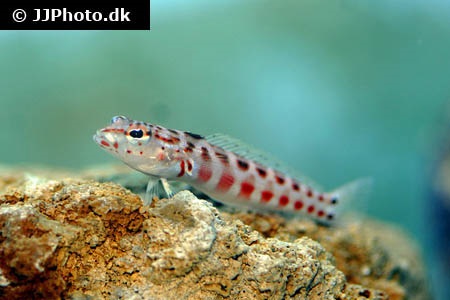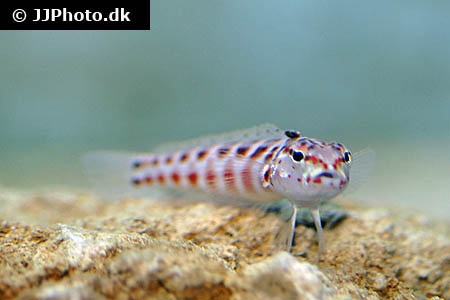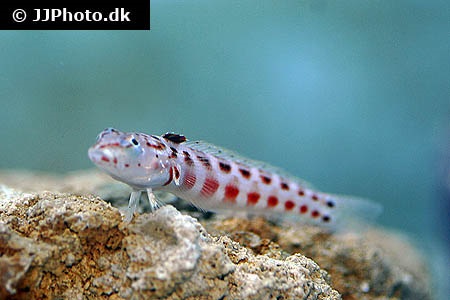Parapercis schauinslandii
| Latin name | Parapercis schauinslandii - (Steindachner, 1900) |
|---|---|
| Local name | Redspotted sandperch |
| Family | Pinguipedidae - Parapercis |
| Origin | West Indian Ocean, The Mexican Golf, West Atlantic |
| Max length | 18 cm (7.1") |
| Minimum volume |
100 l (26 gal) |
|---|---|
| Hardiness |
Hardy |
| Suitable for aquarium |
Suitable with care |
| Reef safe |
Reef safe with caution |
| Aggressiveness | Aggressive towards other species |
| Recommended |
Fish Larger crustaceans (Shrimp, crabs...) Small crustaceans (Krill, mysis, artemia...) |
|---|
This species likes to eat tubeworms.
This species is known to jump out of open aquaria.
This spicies might be a threat to smaller fishes.
This species can be very aggressive towards bottom dwelling animals.
This species poses a threat towards shrimps and crabs etc., which are relatively small.
This species can be kept in a small tank, if it is specifically equipped to meet its needs.
It is recommended however, to keep it in an aquarium which is larger then described above.
This species does best in an aquarium of which 30% of the bottom is covered with sand or gravel.
For a very small tank, the area covered must be at least 50%.
This fish requires feeding several times a day, especially when newly added.
When the fish can find its natural food in the aquarium it requires less frequent feeding.
This species can live as a pair (male and female).
This species can change gender from female to male.
When a male is needed, a female changes sex and takes on the role.
Sandperches (Pinguipedidae) survive mostly on smaller invertebrates, but when fully grown they also hunt small fish and larger crustaceans.
In the wild they will often go after fish that dig in the sand, one can mimic this by placing bits of food in the sand and moving them around.
As they pose a threat to many of the shrimps and invertebrates which often inhabit aquaria, they are therefore best suited to a tank with more aggressive or larger fish.
If one organizes the aquarium to suit these fish, they can however be kept in relatively small tanks, as long as there is a large open sandy area.
When a pair is wanted, it is best to buy them young or get two females.
| Aquarium trade | Yes |
|---|---|
| Distribution | Indo-Pacific: East Africa to Pitcairn (excluding Easter Island), north to Japan, south to the Great Barrier Reef. Throughout Oceania. Not recorded from the Arabian Peninsula or the southern coast of Asia. |
| English common names |
Sand perch Lyre-tail grubfish Flagfin weaver Redspotted sandperch |
Scott W. Michael. Keeping Sandperch in the Saltwater Aquarium - Fish Channel - (English)
Bob Fenner. Sandperches, Family Pinguipedidae, Neat, Intelligent, and Nowhere to be Found in the Aquarium Interest...? - Wet Web Media - (English)




